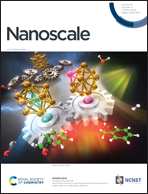Trace topological doping strategy and deep learning to reveal high-rate sodium storage regulation of barium-doped Na3V2(PO4)3†
Abstract
The urgent development of sodium ion batteries has stimulated the rapid innovation of sodium super ionic conductor-type Na3V2(PO4)3 materials with high energy density and ultra-high charge/discharge rates, where the bottlenecks are the activation of multi-electron reactions and the utilization of the third sodium ion. Herein, we design a trace topological doping strategy to introduce barium ions into crystal domains of Na3V2(PO4)3 to partially replace vanadium sites. Deep learning demonstrates that the violation of the inversion symmetry of vanadium by barium substitution can improve the structural stability and change the charge density distribution of vanadium, resulting in the re-distribution of surface electrons and supplying more possible migration paths for sodium ions. Simultaneously, the slight alteration of the crystal structure helps the positive shift of vanadium valence from +3 to +4, providing more multi-electron redox reactions. Among these candidates, NVBP-2 manifests a specific capacity of 65.1 mA h g−1 at 50C rate with superior charge–discharge capability and cycling performance. Moreover, it possesses decent long-term cycling stability with 81.2% capacity retention after 2000 cycles at 50C. In summary, the results indicate that trace topological doping of alkaline metal ions in combination with deep learning has a novel ability to achieve sodium ion storage regulation for sodium ion batteries, which exquisitely provides a new perspective for screening cathode materials with high electrochemical performance.



 Please wait while we load your content...
Please wait while we load your content...